June 1, 2025 | 16:06 GMT +7
June 1, 2025 | 16:06 GMT +7
Hotline: 0913.378.918
June 1, 2025 | 16:06 GMT +7
Hotline: 0913.378.918

Brocade fabrics imbued with the signature identity of Tay people in Lam Binh. Photo: Dao Thanh.
For four generations the stilt house of Mr. Hoa Van Ba's family has nestled at the foot of a rocky mountain in Na Tong village, Thuong Lam commune, Lam Binh district, Tuyen Quang. Its pillars of “lim” (Erythrophleum fordii) and “nghien” (Burretiodendron hsienmu) wood are so big that one person can't make a full hug around them.
Despite not having an opportunity to go to university, finishing high school was enough to pack Mr. Ba's head with knowledge of housework, communication and calculation skills, allowing him to learn enough here and there to improve the family’s economic conditions. When the fields filled sacks of rice and maize full one crop after another, even so much that people and cattle could not eat them all, Mr. Ba thought of expanding another planting area of 8 ha for organic oranges and pomelos.
In 2021 he boldly borrowed hundreds of million dong from the bank to invest in the repair of their largest stilt house and the thousand square meter land surrounding it. Mr. Ba put his faith in the orchard and the stilt house homestay model, hoping that old money would give birth to new money so that he could take care of his debts.
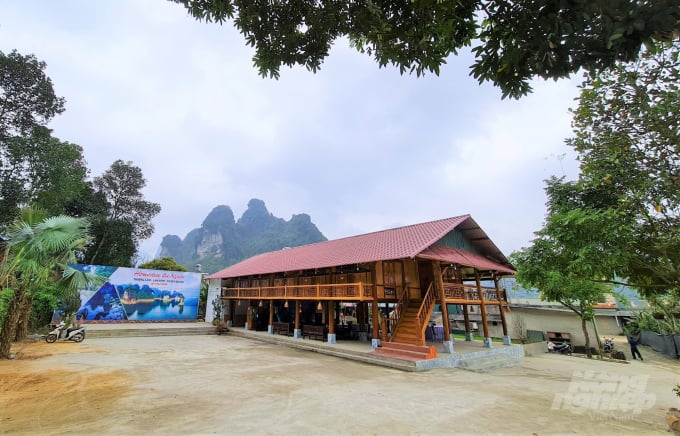
The stilt house of Mr. Hoa Van Ba's family. Photo: Dao Thanh.
Mr. Ba said that in their young days Tay girls and boys learned many lessons from the adults: when the house has visitors the kids prepare blankets, sheets, pillows, and drapes for guests to sleep; after the meal they bring a toothpick as well as a towel and a basin of warm water for visitors to wash their hands; when guests come back the house owner prepares a meal with the best things he can offer.
"I want to welcome guests as if I’m welcoming my family home, so that guests can feel the warmth of the Tay people. In the courtyard the torches are lit and the flickering fire lights up the darkness that blackens from the mountains and the forests. The sound of Then singing (a unique art form of Tay people) echoes far to the top of the ninety-nine legendary mountains.”
These simple and sincere cultural lifestyles are still maintained by Mr. Ba, reflected in his hospitality to every group of guests coming to the homestay. And his goodwill has received the corresponding result: his stilt house is full of guests throughout the tourist season.
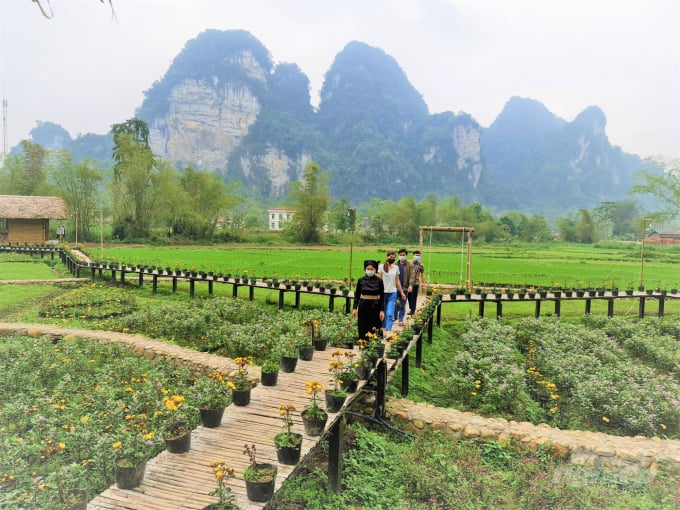
The space in the middle of the homestay villages in Lam Binh is an attractive location for visitors to take beautiful photos. Photo: Dao Thanh.
Mr. Hoa Van Phu is the leader of the group The Ninety-Nine Mountains Homestay in Thuong Lam commune, with four households working a homestay together. When asked about the name, he explained that according to ancient stories the old land of Thuong Lam had ninety-nine phoenixes that came to rest and then flew away. Thuong Lam today still has ninety-nine mountains standing tall and reflecting its shape in the vast ecological lake bed.
Fascinated with the story and wanting to retell this old tale of his people, Mr. Phu and his colleagues named their group The Ninety-Nine Mountains Homestay.
Following Mr. Phu's footsteps, many families also chose names for their family's homestay associated with old tales that nurture the Tay people's childhood memories for generations.
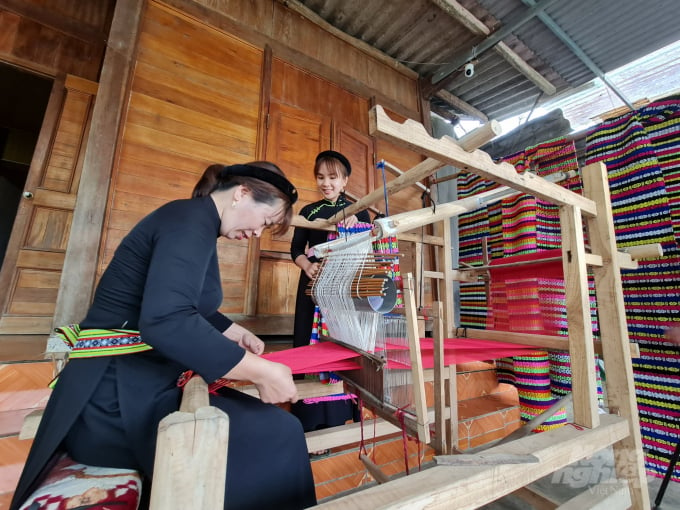
Visitors can experience brocade weaving in Lam Binh. Photo: Dao Thanh.
In 2021 officials came to the Tay villages, asking women who knew how to weave brocade to restore the traditional craft. Lang Can was once a large brocade weaving area with hundreds of hectares, but the situation did not seem good at that moment.
Having been nurtured by her indigenous culture since childhood, Ms. Hoa Thi Nguyet accepted. She did not want the meaningful stories and delicate patterns in brocade sheets to stay forever in the stories told by the elders.
When the evening light fell and the villages in Lam Binh district were gradually closed under the quiet and dark night, the light in Ms. Nguyet’s house was still on. After the creaking of the loom finished resounding with the rhythm of her hand a brocade product with exquisite patterns was made in time to put on display at the festival, so that guests near and far could come to experience its beauty.
Thanks to people like Ms. Nguyet, brocade weaving gradually was revived in the villages of the Tay in Lam Binh. Now Lang Can town has dozens of brocade weavers with nearly 100 women participating.
Translated by Samuel Pham
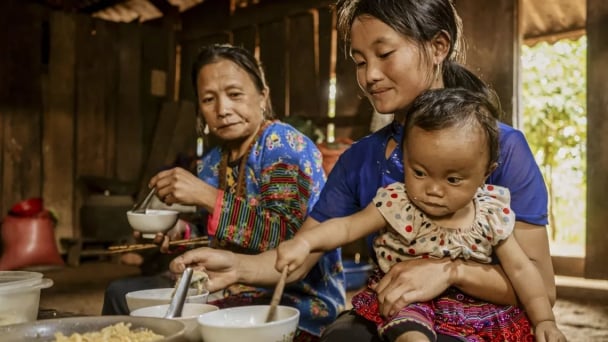
(VAN) 30 experts in health, agriculture and environment participated in a consultation workshop to inform the development of a methodological framework aimed at supporting Vietnam’s transition to a sustainable food system.
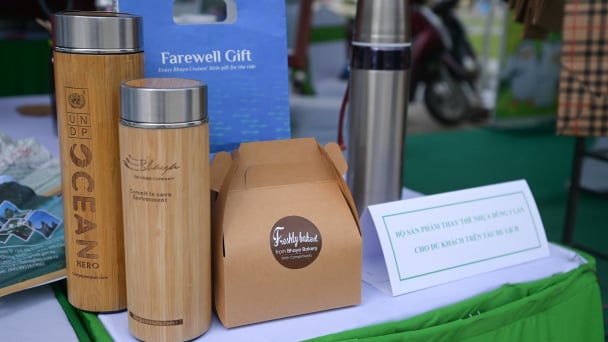
(VAN) Over the past five years, Quang Ninh Province has vigorously and synchronously implemented the ‘Say No to Plastic Waste’ campaign, yielding positive outcomes in advancing sustainable tourism.

(VAN) The prevention of plastic pollution necessitates collaboration among governments, businesses, and citizens. Today's little things contribute to a future free of plastic.

(VAN) This was the directive given by Deputy Minister Phung Duc Tien during a meeting with the Department of Livestock Production and Animal Health, and relevant stakeholders to prevent and control African swine fever.
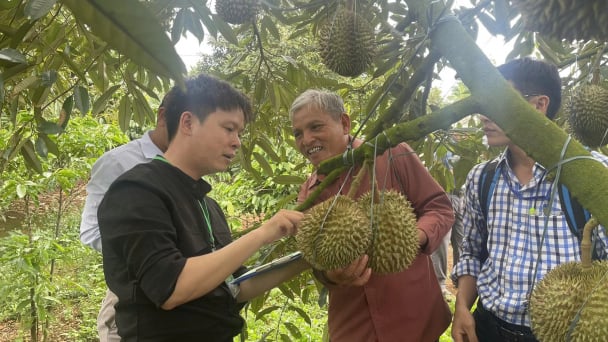
(VAN) For the durian industry to succeed, the value chain must fulfill its commitments to the government, the community, and international partners.
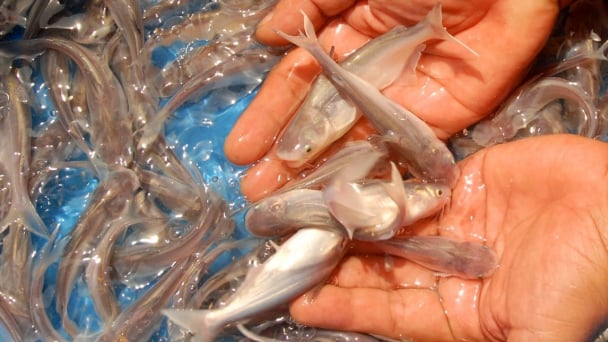
(VAN) Vaccinating juvenile pangasius helps reduce disease, antibiotic use, and farming costs, increasing profits for export-oriented farmers in An Giang.

(VAN) Due to a limited supply of workforce and competitive recruitment requirements, businesses struggle to retain talented veterinary human resources.